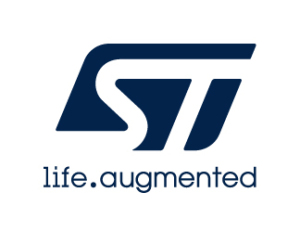- Track 3 ,
Chemical Selectivity and Reproducibility Challenges in Nanomechanical Sensors
Poor molecular selectivity and unacceptable rate of sensor-to-sensor variations have been stumbling blocks in translating chemical and biological sensors based of microelectromechanical systems into a practical reality. Traditionally, selectivity in chemical and biological sensing is achieved by using immobilized receptors or chemical interfaces on cantilever surfaces. While poor selectivity in small molecule detection using reversible receptors is due to the lack of uniqueness of receptor-analyte interaction, nonuniformity in the immobilized receptor graft density leads to unacceptable rates of reproducibility in these sensors. Engineering the receptor layers with vectorial connectivity along the length of the cantilevers shows increased reproducibility and much enhanced sensitivity in chemical and biological detection. Various strategies are currently used for overcoming the selectivity challenges. These approaches include separation prior to detection, array-based sensing, and incorporation of multi-modal, multi-physics approaches. These cantilevers, when fabricated as bimaterial cantilevers, can be used as highly sensitive thermal sensors for photothermal spectroscopy of adsorbed molecules. Cantilever-based photothermal spectroscopy overcomes many of the selectivity challenges encountered when using receptor-based approaches. Multi-modal, multi-physics data obtained by judicial integration of these approaches when analyzed using advanced machine learning techniques enhance the selectivity, sensitivity, and reliability of MEMS sensor arrays.
- Track 4 ,
Cuffless Blood Pressure Monitoring using Bio-Impedance Circuits and Systems
Continuous and robust monitoring of physiological signals with wearable devices provides new opportunities for improving the care and outcomes for people with or at risk of a broad range of adverse health events. One challenge has been that many devices are obtrusive, cumbersome, not very convenient to wear, and unsuitable for ambulatory care. Limited reliability and robustness of these sensing paradigms have also been among contributing factors that prohibit the adoption of wearable devices into the FDA-regulatory space and medical applications. Another challenge to the current method of measuring certain hemodynamic parameters such as blood pressure (BP), is that cuff-based sensors are only capable of providing infrequent measurements and are uncomfortable. Elevated BP is a critically important risk factor for various cardiovascular disorders (i.e., heart attack, stroke, heart failure), kidney diseases, vision loss, and sexual dysfunction. In this talk, we discuss our techniques that directly address these unmet needs for a device that can unobtrusively, accurately, and continuously measure BP. We seek to develop and test a novel transformative solution which addresses concerns of wearability and robust sensing, and enables new sensing paradigms that can be deployed for field-based, mobile, or ambulatory care leveraging bio-impedance. We will discuss a number of sensing, circuit and signal processing paradigms that capture physiological observations including bio-impedance. Our primary focus remains estimating blood pressure from a wrist-worn device with a watch form factor with high degrees of precision. We will discuss several methodologies for noise rejection that improve the robustness of signal acquisition. We will also discuss machine learning techniques that converts our bio-impedance observations to blood pressure. We will offer concluding remarks on the trends of wearable computing technology development and potential future directions.
Ultra-sensitive microtoroid optical sensing technology for biomedical applications
High-Q Fused-Silica Micro Birdbath Shell Resonator Gyroscope
High-precision, lightweight, and low-cost MEMS gyroscopes are needed in many existing and emerging applications including autonomous vehicles, drones, underwater vehicles, space satellites, and wearable motion-tracking devices. We developed a novel fused silica three-dimensional shell resonator called the micro birdbath resonator and the micro birdbath resonator gyroscope (BRG). The micro birdbath resonator has Q as high as 12.5 million at 12.798 kHz. A vacuum-packaged BRG with a 10-mm-diameter resonator demonstrates an angle random walk of 0.00016 deg/sqrt(hr) and a short-term in-run bias stability of 0.00138 deg/hr. The performance of the BRG is the best among MEMS gyroscopes reported to date.
Sensors for Smart Packaging in Healthcare and Food Industry
Smart packaging systems, also called active or intelligent packaging systems, are typically used for food, beverage or pharmaceutical products to extend their shelf life, monitor freshness, provide visual information about the product inside the package, improve safety and offer convenience. Recent advancements in the smart packaging materials and technologies offer huge potential for healthcare and food industry. Along with the invention of syringes that change colour after use to inhibit the spread of the disease, and smart packaging that alerts on the expiry date of its food content, it is the real-time communication with sensors built into these packaging that really brings the change and creates new opportunities. Intelligent packaging technologies can change the supplier-consumer relations in food chain operations, as well as impact the way that healthcare professionals and patients interact with medical devices and each other.
Radar sensing for human healthcare: challenges and results
Biomechanical energy harvesting for medical implant applications
Active implantable medical devices (AIMD) play an important role in monitoring, diagnosing and treating patients. In-body medical device development has been facing an increasingly stronger demand with increases at a pace of 6% yearly. The current technical challenge in this field is creating smart, small and long-term use implants that improve the patients’ health and life quality. In this context, while implanted power sources have been almost exclusively based on traditional batteries, mechanical energy-harvesting devices exhibit clear advantages and could be used in many AIMD in the near future. Using the example of the pacemaker, this talk presents technologies and strategies to efficiently convert mechanical energy into electricity, highlighting the main challenges that need to be addressed in the particular context of the human body (low vibration frequency, extreme miniaturization, high reliability) as well as the technological and methodological evolutions required to move towards industrialization of implanted biomechanical energy harvesters.
Luminaire-Based Environmental Sensing for Comfort Monitoring and Control
- Track 16.1 ,
A Wearable Cuffless Blood Pressure Sensor with Radio-Frequency Technology
- Track 16.1 ,
From digital twins to wearables and back
The notion of digital twins is well-established for technical systems, in particular mechanical devices. Yet our understanding of the merits and use of human digital twins is still very limited. In this talk, I will give an overview on our efforts in designing and utilising wearable sensing technology and artificial intelligence (AI) methods with and against human and technical digital twins to realise medical applications.
- Track 16.2 ,
A Microwave Microfluidic Reflective-Mode Phase-Variation Sensor
- Track 16.2 ,
Molecular Understanding of Electromagnetic field-biomatter Interaction for Rational bio/Chemical Sensing Device Design
- Track 16.3 ,
ENIG PCB Electrodes: Low Cost Electrochemical Biosensing Platform for Wastewater Epidemiology
In this talk, we will present our recent work on low-cost electrochemical DNA biosensors based on ENIG PCB electrodes for wastewater monitoring using portable end-point PCR instruments, without the requirement for qPCR reagents and instrumentation. The sensor is capable of detecting SARS-CoV-2 nucleocapsid gene amplicons at concentrations as low as 10pg/μl and can detect RNA isolated from wastewater collected from a sewage treatment plant in Mumbai, India. The electrodes do not undergo any surface modification and are cost-effective solutions with long shelf-life for wastewater epidemiology. We have also recently developed an immunosensor platform for antigen-antibody based biosensing with these electrodes.
- Track 16.3
Acoustic and Ultrasonic Characterisation of Blockages and Defects in Underground Pipes
- Track 9 ,
Robust Sensor Placement Optimization with Distance Uncertainty
Sensor placement in wireless sensor networks (WSN) aims to maximize coverage while minimizing total deployment cost. However, existing coverage-only approaches do not consider the robustness of the entire system where sensors may break down or malfunction. In this talk, we first show a robustness-aware sensor placement approach by constructing a multi-objective optimization model. We demonstrate that this method increases the robustness of a WSN by up to 50%, with 201% higher probability of monitoring the entire environment as compared to the state-of-the-art coverage-only approach. We further improve our proposed method by introducing a robust optimization-based sensor placement approach that considers the uncertainty of the distance between a sensor and a target. We show that this improved model increases the probability of target detection by up to 77% compared to state-of-the-art coverage-only approach.











